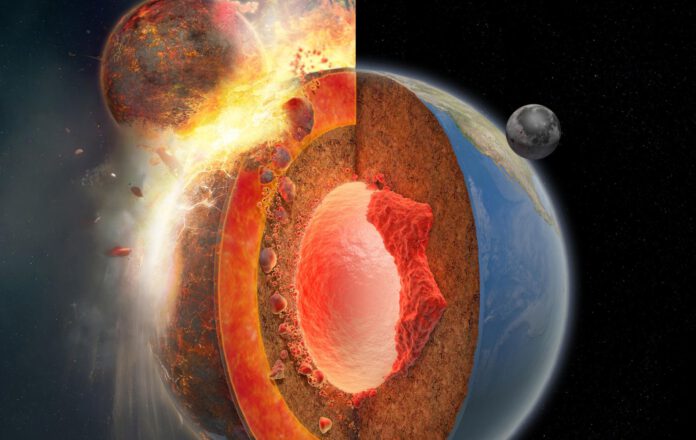
Tracing the Origins of Mysterious Structures at the Earth’s Core
Deep underneath the African continent and the Pacific Ocean, near the heart of our Earth, lie vast and strange masses (twice the size of our moon). For decades, the origin of these profound formations remained a mystery. However, US researchers believe they may have pieced together an intriguing theory – these masses might be fragments of another planet.
The postulations were published in the journal, Nature, with the study focusing on two mysterious lumps found in the 1980s. The so-called ‘blobs’ – formally known as Large Low-Velocity Provinces (LLVPs) – are approximately twice the size of the moon and are located near the Earth’s core. One LLVP is deep below the African continent, and the other under the Pacific Ocean. Existing research indicates that the LLVPs probably have a different composition from the surrounding mantle. However, for a long time, it remained unsure what these structures were made of.
The Connection to a Lost Planet – Theia
In a new study, US researchers propose a possible origin of the LLVPs. Their research suggests that these large structures could be remnants of Theia: a planet believed to have collided with Earth billions of years ago. This massive impact resulted in large fragments – from both Earth and Theia – clumping together in Earth’s orbit to form our familiar moon.
A Eureka Moment
The breakthrough came unexpectedly to researcher Qian Yuan while attending a seminar on planet formation. One of the presenters spoke about the moon’s formation and pointed out the moon’s relative richness in iron. Yuan had an “aha” moment when the presenter argued that unlike the moon, no trace of Theia could be found on Earth. Yuan speculated that the iron-rich collided object might have transformed into the ‘mantle blobs’.
Simulations Confirming the Theory
Together with colleagues, Yuan decided to investigate this hypothesis more thoroughly. The team used models to simulate the collision between Earth and Theia. These simulations confirmed that the collision could have created both the moon and the masses within the Earth. “Through mantle convection simulations, we discovered that Theia’s dense, iron-rich materials could have sunk to the bottom of the Earth’s mantle and accumulated there,” explains researcher Mingming Li. In conclusion, colleague Ed Garnero stated: “The giant blobs deep in the Earth, beneath our feet, are extraterrestrial. Our Earth doesn’t just have lumps; it has alien lumps!”
Solving Two Mysteries
The research provides plausible solutions for two longstanding mysteries. The first being the origin of these mantle blobs. Furthermore, it answers the question of why no material from Theia had ever been found anywhere outside the moon. The research suggests most of the ill-fated planet was absorbed by the young Earth, while the remaining fragments formed the moon.
“This research shows that the huge lumps (the LLVPs) deep in the mantle could be made up of materials from the planet that struck proto-Earth and formed the moon,” explains researcher Mingming Li. “And that the moon and the lumps thus have the same origin. By looking inward – to the inside of the Earth – instead of outward – to the moon – we have found evidence of the cosmic catastrophe that the gigantic impact that formed the moon was,” concludes researcher Travis Gabriel.











